Mexico City: a virtual tour through film, music, books, food and art
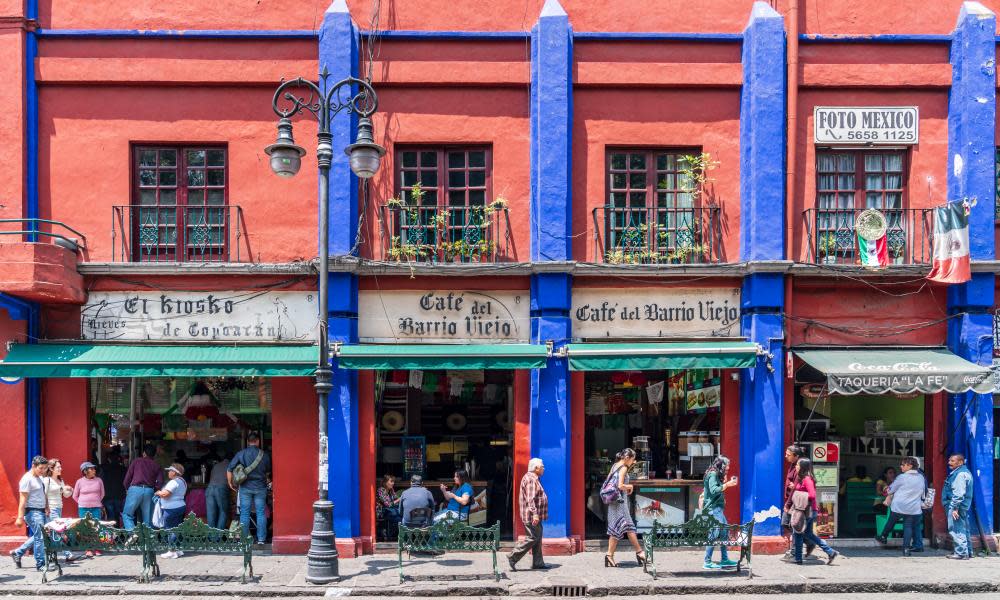
At a community dinner in Santa María la Ribera – one of Mexico City’s first suburbs, built in the late 1800s just west of the old centre – I met a European contortionist. He was in his 70s and used a wheelchair. Circus work had first brought him to the country decades ago, but then he’d never left. “I feel more alive here,” he told me.
This is the city’s seduction: extremes of existence can happen all on the same street corner, and render life more vivid. The Slovakian expat writer Lucia Duero describes the city as “on the edge of the moment: an intensive intensity of being. You know the world is torn apart and you hold to it tight, joyfully.”
Foreigners have been beguiled by the city ever since Hernán Cortés and his conquistadors arrived in the ancient Aztec capital of Tenochtitlán, the site on which the modern city now stands. An Austrian emperor, installed by Napoleon III of France, ruled briefly here, DH Lawrence found inspiration for his novel The Plumed Serpent, Hollywood royalty hopped down from LA, and the Beat generation sought escape (from crimes, from mainstream America) and self-destructive transcendence.
From a few islands on a lake, the city has grown to be the fifth-largest in the world – el monstruo (the monster) some call it. Part of its gravity arises from the density of history here. When you walk the streets the past is always present: “The city has devoured itself over and over again,” says the writer Carmen Boullousa. Seven hundred years of sediment – the architecture, languages, cultures and flavours that arrive here – compress into something new, yet retain a fragment of their origins. The Irish-Mexican painter Phil Kelly enjoyed these streets because they taught him more than books could.
Before the pandemic, we could play a game of guessing a visitor’s itinerary: the tourist route had ossified into a string of well-known sights and restaurants. Hopefully, after this pause in travel, visitors will expand their curiosity and dig deeper into the city. Many of the works I list below focus on the poverty, violence and pain that so permeate Mexico City, because this is also the source of the joy and generosity that DF (or Distrito Federal, as the city is referred to) and the local chilangxs have to offer.
Watch
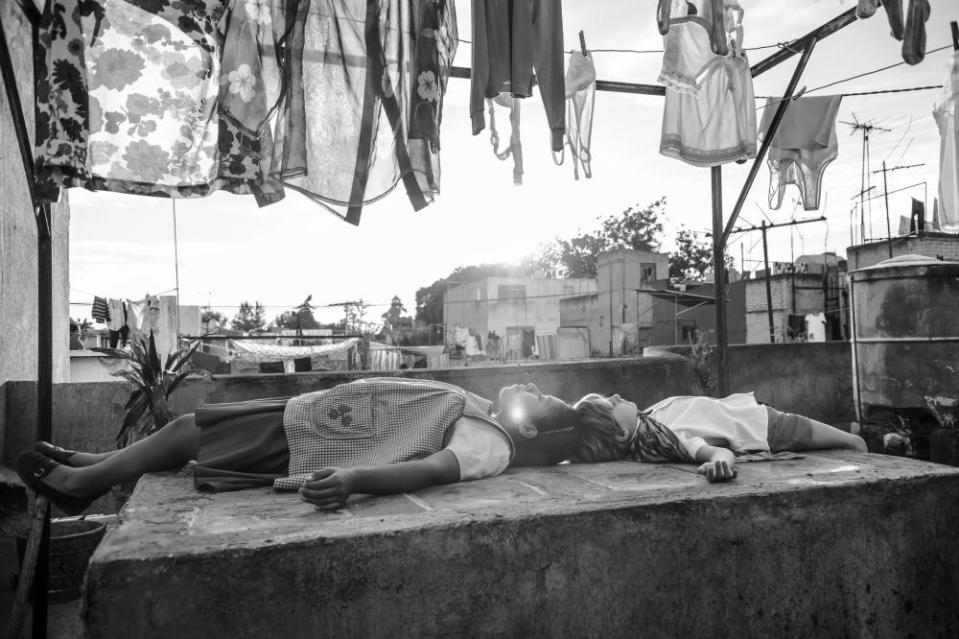
I saw Roma at the Cineteca Nacional, a refuge of film on the edge of Coyoacán, where there’s always something interesting showing and movie buffs lounge in the bars and on the lawn. The film evokes a timeless vision of its eponymous neighbourhood and its success speaks for itself, but I’ve come to appreciate how radical it is: to have a female protagonist, yet alone one of indigenous heritage, is still too rare in Mexican cinema and culture.
Walking anywhere in the city, one can’t help but be confronted by the crude and shocking images of the notas rojas (literally red news) plastered at every newspaper stand. Should a society hide its violence or stare at it directly? This is what the film The Man Who Saw Too Much grapples with in profiling the city’s most famous photographer, Enrique Metinides. Starting when he was nine, he chased accidents, tragedies and crimes for 50 years, and had a few close calls himself. He’s a charming and compelling subject, and his beautiful, shocking images are on a different level from the crude snaps published today.

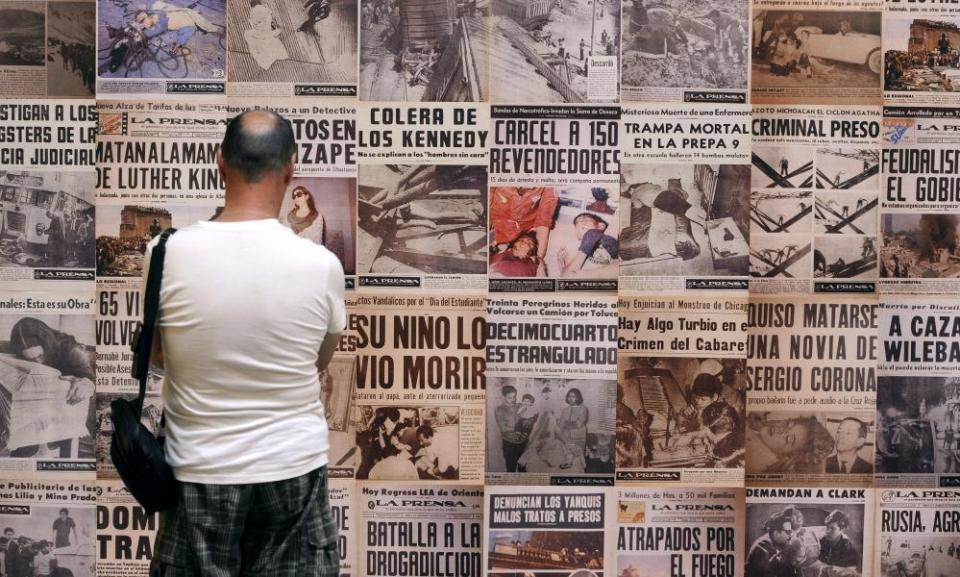
Mexico City is a character in Alonso Ruizpalacios’s first two stylish films. Guëros is a black-and-white slacker odyssey set during the student strike at the city’s largest university, Unam, in 1999. The film captures that rambling lostness one can suddenly feel in the city – when the characters don’t know where they are, they ask, “Where are we?” The reply, “In Mexico City.” The 2018 thriller Museum loosely portrays the true daring robbery of the National Museum of Anthropology by two wayward twentysomethings in 1985. As they pilfer the most priceless Mayan objects, you get a good tour of the museum.
Listen
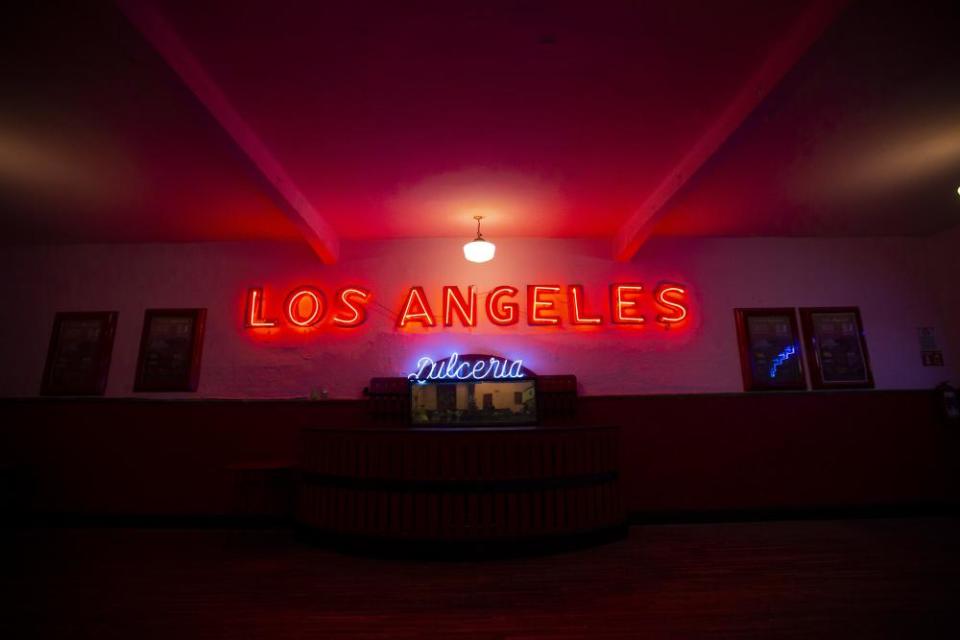
The Salón Los Ángeles dance hall opened in 1937 and has never closed. Unfortunately, the pandemic threatens to shutter this Mexico City institution, where men and women put on their finest clothes and dance to live orchestras. The Los Angeles Philharmonic created a homage to the club as a fundraiser, filming two works that evoke dancefloor rhythms by George Gershwin and Arturo Márquez. The website includes photos of the club, an interview with Márquez and a great playlist curated by him, inspired by and traversing the various styles and genres those who danced at Salón Los Ángeles might hear.
Cumbia music originated in Colombia, but it arrived in Mexico in the 1940s and has become the country’s national sound. You hear its rhythms and iterations everywhere in the city, from barrio block parties to buses to clubs. This compilation will make you yearn for a sweaty dancefloor, and the local band Son Rompe Pera takes the genre somewhere new by combining the marimba with a punk spirit. The Gama brothers learned the instrument from their father, but preferred playing in punk and rock bands when they were young. They’ve put it all together on the insanely lively album Batuco.
The mournful and passionate ranchera songs of Chavela Vargas embody the cantina, those Mexico City bars where (mostly) men mourn, celebrate and, above all, drink. She revolutionised the genre popularised by the mariachi by stripping down these songs of love and heartbreak to just her haunting voice and a guitar, and by stripping away her femininity, too. As a lesbian in a deeply homophobic society, she had to be more macho than the men, drinking them under the table during days-long benders in cantinas, places where women can still feel unwelcome.
Close your eyes and you’ll be transported to the city through sound artist Félix Blume’s Los Gritos de Mexico. He treats the sounds of the street as instruments in an orchestra and creates rhythms and harmonies out of Mexico City’s sonic fabric, leading the listener through noises from the intense cacophony of hawkers’ calls to the quiet relief of the rain.
Read
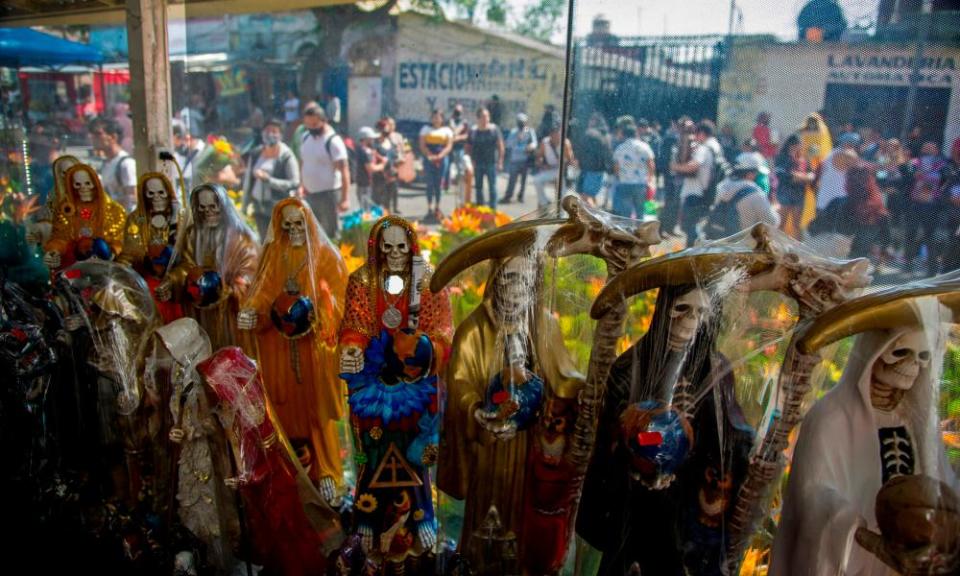
Beat poet John Ross isn’t as famous as some of his colleagues who shot through Mexico City, but he stayed, spending his last three decades living in Hotel Isabel in the Centro Histórico. Hhis book El Monstruo tells his opinionated and entertaining history of the city through his years of rebel reporting and tales of the people normally forgotten by chroniclers.
In a megalopolis one often lives in a contradiction – as this subjective “I” who is thinking and feeling, and also as an obliterated being, one of millions. Francisco Goldman navigates this ebb and flow between the inside and outside in his book The Interior Circuit, weaving together a memoir of grief after losing his wife and of the larger city, specifically reporting on the Tepito neighbourhood and its residents who lost family in a cartel abduction. It’s a moving portrait and a window into areas tourists would not normally seek out.
The youthful poets of Roberto Bolaño’s stories and novels career through the city, drinking, arguing and loving. In The Savage Detectives, he captures that energy of collisions and creation that one feels constantly happening here.
Juan Villoro, one of Mexico’s leading novelists, delivers a contemporary portrait of Mexico City that is as diverse and labyrinthine as the city itself. In Horizontal Vertigo: A City Called Mexico he weaves together voices, styles and disciplines in a personal and expansive exploration, a flâneur through geography, history and culture. On 24 March Community Bookstore in Brooklyn, New York is hosting an online conversation between Villoro and travel writer Paul Theroux at 7.30pm (eastern time). To register click here: communitybookstore.net.
Eat
Mexico City is one of the great practitioners of street food and chilangxs are obsessed with their next meal. Netflix’s Taco Chronicles immerses you in the culture and sensations of the taco, and the episodes on pastor (spit-grilled), guisado (stew) and suadero (thin cuts) put you in the city’s streets and markets – you’ll definitely be hungry afterwards.
It’s impossible to experience from afar the electric culinary dance of lunch at Contramar, the city’s renowned seafood restaurant, but its chef, Gabriella Cámara, conjures the spirit and recipes in her book My Mexico City Kitchen. Go all in and make the distinctive pescado a la talla recipe, or have her teach you how in her MasterClass series.
James Oseland’s World Food: Mexico City documents the city’s traditional dishes from the streets to the fondas (small family restaurants) to the home kitchen. It’s a great travelogue that evokes the food culture with very approachable recipes.
See
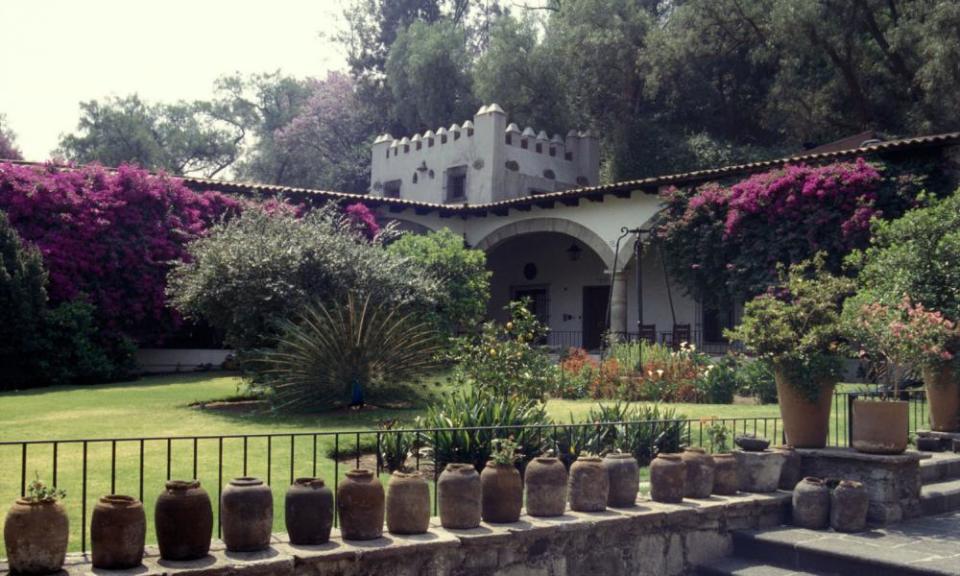
Photographer and film-maker Santiago Arau primarily works with drones to capture the boundlessness of the city, and his night images are enchanting. This short film uses a whole bag of tricks to swoop in and out of the dizzying streets.
Many make the pilgrimage to Frida Kahlo’s Casa Azul home (which you can poke around virtually; plus Mexican jazz musician Tino Contreras will be streamed from the Casa Azul on 10-11 April; book tickets here), but a better bet to actually see her art is to venture a little further to the less-crowded Museo Dolores Olmedo, home to the largest collection of Kahlo and Diego Rivera paintings. In the mean time, there is a virtual tour or a series of more informative online exhibitions of Kahlo’s life and art.
Follow artist and architect Miky Alanis’s Instagram, where he records the many styles of the city’s architecture, buildings both celebrated and forgotten. Then check out Bandita Chilanga, a collection of images that capture the absurdity of Mexico City life, those only-in-DF moments that make you laugh, cry and rage.


